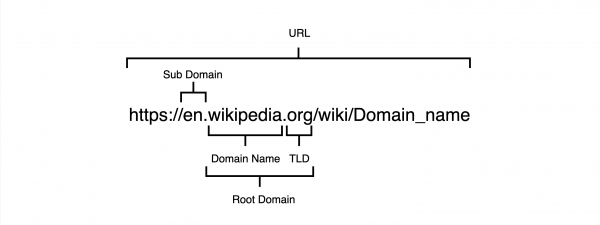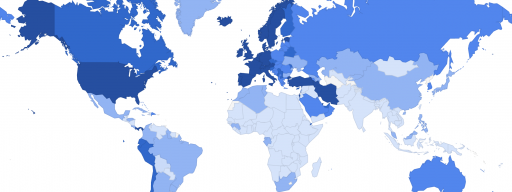Domain names are easy to remember web addresses. You use domain names to identify, connect and interect with web content.
Domain names
Domain names route humans on the internet to websites (content from web servers). For example, my current location translates the domain name google.com into the ip address 74.125.137.102. This ip address is like a street address for a house, but for web servers. Also called second-level domains.
Top level domains TLDs
Top level domains (TLD) are found at the end of a domain name after the last period. For example, the TLD for google.com is “.com”. There are many different TLD, such as: .net, .gov, .org,… ICANN regulates and manages authority over different TLD. You can purchase an available domain for a small fee from different domain hosts.
Sub domains
Sub domains are optional and used to create seperate sites out of the same root domain. While the “wikipedia” in “en.wikipedia.org” is technically a subdomain of the TLD “.org”, more commonly the “en” is referred to as the sub domain, and the “wikipedia.org” as the root domain.
Parts of domain names
| Domain Part | Domain Example |
|---|---|
| Domain name | https://en.wikipedia.org/wiki/Domain_name |
| Top level domain TLD | https://en.wikipedia.org/wiki/Domain_name |
| Sub domain | https://en.wikipedia.org/wiki/Domain_name |
| Root domain | https://en.wikipedia.org/wiki/Domain_name |
| URL | https://en.wikipedia.org/wiki/Domain_name |
Conclusion
Domain names are to IP addresses as business names are to physical addresses.
A physical address provides some basic information, but knowing the name of the business that resides at that address would give you a better idea of whether or not you want to visit. In a similar fashion, a domain name turns the seemingly random set of numbers that make up an IP address into an identity that adds some context to the content.





